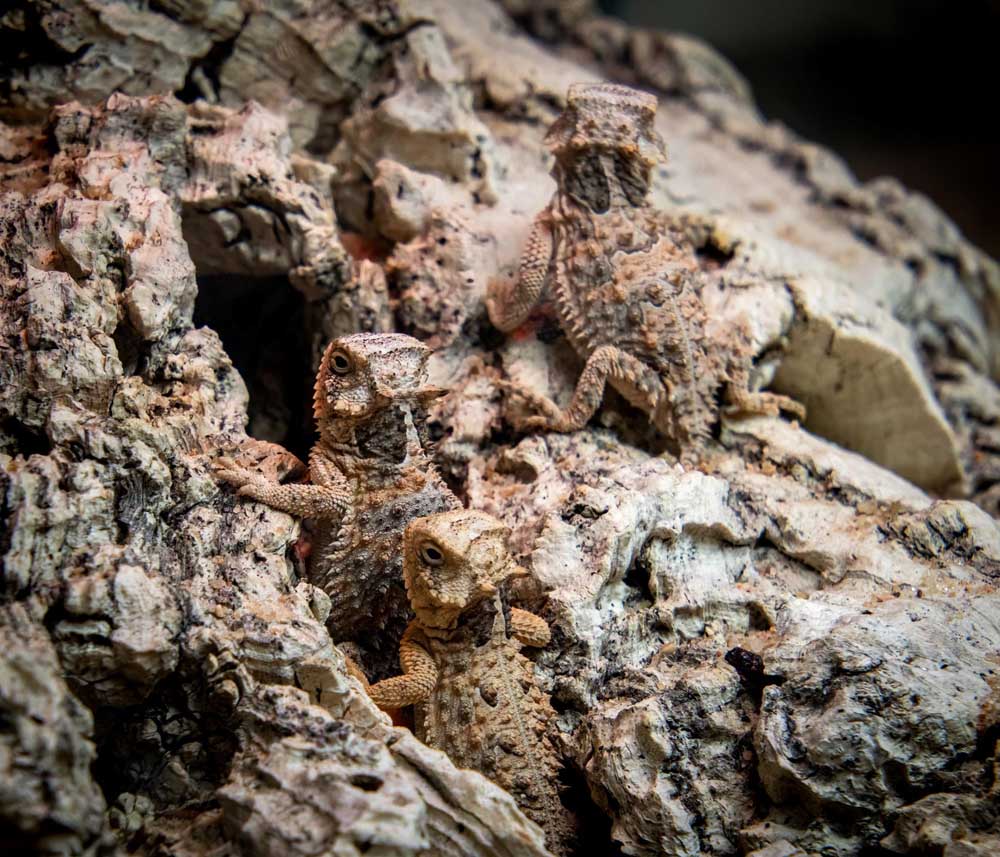100th Texas Horned Lizard has hatched at Caldwell Zoo in Tyler
Published 5:40 am Saturday, September 30, 2023

- The 100th Texas Horned Lizard has hatched at Caldwell Zoo under their conservation efforts to rebuild the declining population.
The 100th Texas Horned Lizard has hatched at Caldwell Zoo through its conservation efforts to rebuild the declining population.
The Texas Horned Lizard is actually a lizard, not a frog or a toad like a lot of people think they are. It is a small, warty lizard with spikes coming out of its head that used to inhabit all areas of the state of Texas, according to Supervisor of Reptiles for the Caldwell Zoo William Garvin.
Trending
“Most people over the age of 50 remember when horned lizards were plentiful in Texas. It immediately takes them back to their childhood. They will reminisce and talk about when they used to catch and play with ‘horny toads’ growing up,” he said. “The young adults and children of today have probably never seen or heard of horned lizards; which goes to prove that the decline of the horned lizard happened very fast — essentially from one generation to the next.”
Garvin said the horned lizards are not an endangered, but are a threatened species with Texas’ invasion of fire ants as one of the largest reasons for this.
Curator of Birds and Reptiles Yvonne Stainback said once the eggs are laid, they are carefully moved from their sand burrow to a temperature-controlled incubator. In approximately 63 days, the hatchlings emerge.
In 2021, there were 17 babies and last year there were 18 babies. This year there are 32 babies and 31 more eggs ready to hatch in the next couple of weeks.
“We’ve been increasing production and for us and the zoo, it’s a program that makes sense for us. We’re trying to educate the current generation on the horned lizard,” Stainback said. “Working with Texas Parks and Wildlife, the state of Texas is doing just that. It’s a good conservation effort for our zoo because it’s local and we can support it.”
Once the hatchlings are about 7 weeks old, they are fitted with sonar electronic tracking devices and taken to Mason Mountain Wildlife Preserve, near Austin, where they are released into the wild. The current 32 babies were released on Sept. 22.
Trending
Several of the zoos in Texas participate in this program. Since its start 20 years ago, thousands of horned lizards have been released into the wild. They have also discovered a second generation of horned lizards at the Preserve, so the hatchlings are reaching adult age and reproducing — proof the program is definitely working, according to Stainback.
There are several ways the public can assist in the conservation effort such as through donations to either the Caldwell Zoo Horned Lizard Conservation Program or the Texas Parks and Wildlife Horned Lizard Conservation Program.
Donor of the Caldwell Zoo program Linda Davidson said there are also several fun ways to make a difference in the conservations efforts.
“A portion of the cost to purchase a personalized Texas license tag featuring the horned lizard is designated for the Texas Parks and Wildlife’s program,” she said. “There is also a Horned Lizard T-shirt in the Caldwell Zoo gift shop.”
Stainback said it is good to also just be aware of the issue, what is being done about it, and why.
Currently, the state conservation programs are still working out how to make this more successful and establish a stronghold in the central Texas area before thinking about a reintroduction program in the other parts of the state.
The long-term goal is to have horned lizards back in East Texas again.
Right now, visitors cannot see a whole lot. But plans are being discussed that would create an exhibit area to allow the public to view the lizards or possibly view them by closed-circuit TV. There is also a plan in the works to educate visitors with graphics and photographs.
For more information, visit the Caldwell Zoo Conservation Programs webpage.






